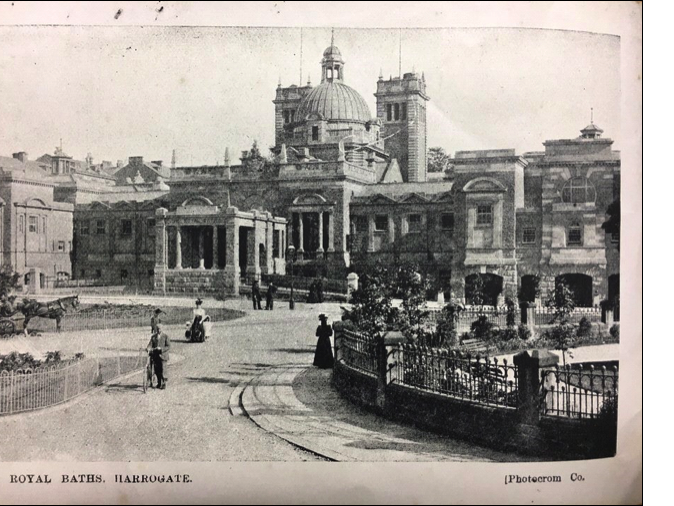Colon Hydrotherapy Through the Ages
From bowel cleansing by the Ancient Egyptians to the ground-breaking research of Ilya Mechnikov in the early 20th Century, colon hydrotherapy has been used as a safe and effective treament in various forms throughout history….

Historians claim that the practice of bowel cleansing was first used by the Egyptians. The ancient civilisations worshiped water and were very protective of their abdomen. They thought that ‘being clean within by water’ equalled ‘a rebirth into the new life’, comparing ‘uncleanness within the body’ to ‘a tomb that outward is painted fair, but inside is full of horrible uncleanliness and abominations’. ‘Fear no more after cleansing within with water, because the spirits of water will eternally abide in you and shall serve you evermore (The Ebers Papyrus of 14th century B.C. and the Edwin Smith Papyrus c. 1700 B.C.).

It is said that a historian Herodotus (484-425 B.C.) insisted that the frequency of enemas, used by the Egyptians was three consecutive days, every month. There is recorded evidence where enemas are mentioned by the Babylonians and Assyrians in 600 B.C. In Ancient Greece and the Roman Empire enemas were preferred over laxatives for treating constipation, fevers and intestinal worms. Enemas were also widely used by early African tribes. https://www.gpact.org/docs/the%20history%20of%20colonic%20hydrotherapy.pdf?fbclid=IwAR3HTx8OXlNB7uV2nnk2dwUx6gQ3tr4ibHezkD8QT0qDoKZrpmWz57pm0Wg.
The Mayan lost civilisation used coffee enemas. Some researchers suggest that they passed on the ritual of enema cleansing through the generations to become closer to a long-lost civilisation of ‘gods’, who practiced bowel cleansing. We can only speculate whether it was a health related activity or a tool to achieve a state of hallucination and to receive enlightenment.

The enema syringe was the first apparatus to administer water rectally. Avicenna (980-1036 A. D.) and Abu Al Zahrawi (Albucasis), who died in 1013 A. D. are mentioned as developers of rectal syringes. Also there are references to the use of enema syringes in Fourteenth Century England. John Ardene (1307-1390), a famous English surgeon, wrote that each person, constipated or not, should be purged three or four times a year to maintain good health.
In the 1480s, Louis XI, called "Louis the Prudent", had his apoplexy attacks relieved by an enema, administered by his physician Angelo Catho. He was so impressed by the enemas’ effectiveness, that he ordered his pet dogs had enema treatments too.

17th century Parisian society enjoyed at least three enemas a day, praising the wash of the bowels as essential to wellbeing. That era became known as the ‘age of the enema’. The European physicians of that time believed that the enema was a cure for multiple health symptoms and used to treat constipation, headache, sexual dysfunction and fever.
Louis XIV (1638-1715) also known as Louis the Great or the Sun King of France, became a record breaker by having over 2,000 enemas during his life.

‘’Enemas were also once used to resuscitate drowned people. Tobacco smoke was blown into the rectum of the “apparently drowned” to provide warmth and stimulation. Tobacco resuscitation kits consisting of a pair of bellows and a tube were provided by the Royal Humane Society of London (founded in 1774 as the Society for the Recovery of the Apparently Drowned) and placed at various points along the Thames’’© Royal Pharmaceutical Society Museum. In the 18th century, English Navy surgeons carried enema kits on board their ships to administer this kind of enema for reviving the drowned.

The end of 19th century transformed the enema into colon hydrotherapy, as we know it today, thanks to the invention of rubber and a colonic kit. It seemed that the world would embrace the more advanced way of cleansing. However, the early 20th century medical community turned to a more commercial, less intrusive and less time consuming approach - laxatives. Physicians in the 1900s started removing colon hydrotherapy from their prescription, paying little attention to the laxatives’ ineffectiveness and wide range of side effects when taken for a long period of time.
Nonetheless, colon hydrotherapy survived 20th century ignorance, due to Dr John Harvey Kellogg. He reported in the Journal of American Medicine (1917), that he had treated 40,000 cases of gastrointestinal disease by cleansing the colon andimproving diet and exercise, such that only 20 patients out of 40,000 needed a surgical intervention.
At the same time the Russian scientist and Nobel Prise winner in 1908, Ilya Mechnikov studied the flora of human and primate intestines. He developed a strong understanding of how certain bacteria could poison the body. Mechnikov’s concept of aging, due to wrong bacteria in the gut is still unchallenged. The use of lactic acid bacteria (Lactobacillus), included in modern probiotics, and cleansing the gut were his main postulates of how to minimise the attacks of harmful microorganisms and to live longer and healthier.
Ilya Ilyich Mechnikov (1845-1916) became the strongest supporter of colon cleansing. He was one of the founders of modern immunology and first discovered macrophages, the type of white blood cells of the immune system, also called ‘killer’ cells as they destroy substances foreign to our body, pathogenic microflora and cancer cells. He thought that toxins could shorten the lifespan. It is no secret now that our immune system is closely joined to the colon.

The UK and England particularly was a pioneer in hydrotherapy among its European counterparts. By the beginning of 20th Century there were 48 spas in England that had been founded before 1815 https://www.tstrevista.com/tstpdf/tst_20/articulo20_04.pdf. Among them were Buxton and Matlock in the Derbyshire Peak District, Tunbridge Wells, Harrogate, Leamington, Malvern, Cheltenham, Epsom and Bath.
As an illustration, Harrogate’s treatments could offer more than the European resorts. Contemporary correspondents informed their readers, that ‘hydrotherapy institutions’ became even more experimental and were keen to sell various water cure therapies ‘ranging from the mundane to the terrifying’, including a colonic irrigation. https://www.researchgate.net/publication/38065670_Colon_irrigation_causes_lymphocyte_movement_from_gut-associated_lymphatic_tissues_to_peripheral_blood.
By the end of the 19th Century, the physiology of the digestive system and its pathological manifestations were classified well enough to allow physicians to observe the benefits of colon cleansing. Until the middle of the 20th Century, enemas and colon hydrotherapy were highly regarded and medical doctors used to prescribe colonic irrigation, recognising a regular bowel movement as one of the most important parts of their treatment progress. Today we acknowledge the renaissance of colon hydrotherapy. More and more people want to invest in their health. They name prophylaxis as the main motivation in having colonic irrigation. People become more aware that maintaining a healthy colon means being in charge of their own health and life.